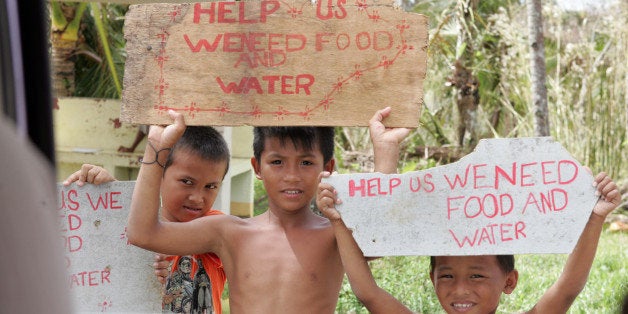
It was one of the strongest storms in world history, but even so, Americans aren’t that interested in Typhoon Haiyan, a new study shows.
After surveying 1,013 adults a week after the storm hit, the Pew Research Center for the People & the Press found that Americans’ engagement with the news and in donating to the relief effort is trailing behind other recent natural disasters.
According to the poll, 14 percent of Americans said they’ve made a donation to charities working in the Philippines and 17 percent said they plan on doing so. In the same period after the massive earthquake hit Haiti, 18 percent of Americans said they contributed and 30 percent said they planned on donating.
While contributions historically tend to pick up in the weeks following a disaster, the actual difference in dollars and cents has already varied vastly between these two crises in particular.
Within 10 days of the Haiti earthquake in 2010, Americans donated more than $300 million to relief efforts, NPR reported.
Part of what helped smash fundraising records was the nascent text-donation technology, which had not previously been available in the wake of a crisis.
In the week following Typhoon Haiyan, initial numbers showed that Americans donated more than $33 million, CNN Money reported.
But it’s not just the actual monetary donations that are flagging. Americans don’t appear all that interested in even following the unfolding tragedy, which has already claimed more than 5,000 lives.
According to Pew, 60 percent of Americans were following the Haiti earthquake aftermath “very closely” and 55 percent of Americans did the same after the Japan Tsunami.
Just 32 percent of Americans have been engaged with the news about the typhoon, the study found.
The most closely followed story the week the storm hit was the ongoing rollout of the 2010 Affordable Care Act; the typhoon came in second.
Pew didn’t reveal why Americans have been less engaged with Typhoon Haiyan, but experts believe it may mostly be related to the timing of the storm.
Sandra Miniutti, vice president, marketing and CFO of watchdog Charity Navigator, told The Huffington Post that Americans have likely been preoccupied with a number of other issues.
For one, the Midwest tornadoes cut news coverage of the typhoon short and the approaching holidays could be making people less inclined to part with their money.
Experts estimate that the cost of rebuilding the devastated parts of the Philippines could reach $5.8 billion, Reuters reported.
While relief agencies initially faced major obstacles in delivering aid to those who needed it most, authorities say that the “worst is over.”
"We have overcome the most difficult part," Eduardo del Rosario, civil defense chief, told the AP on Friday. "In the first week we can say we were in the emergency room ... this second week we are now in the ICU, still critical but stabilized."
Are you part of the 17 percent that has committed to donating to Philippine relief efforts? Awesome! You can find tons of ways you can help out typhoon victims right here.

